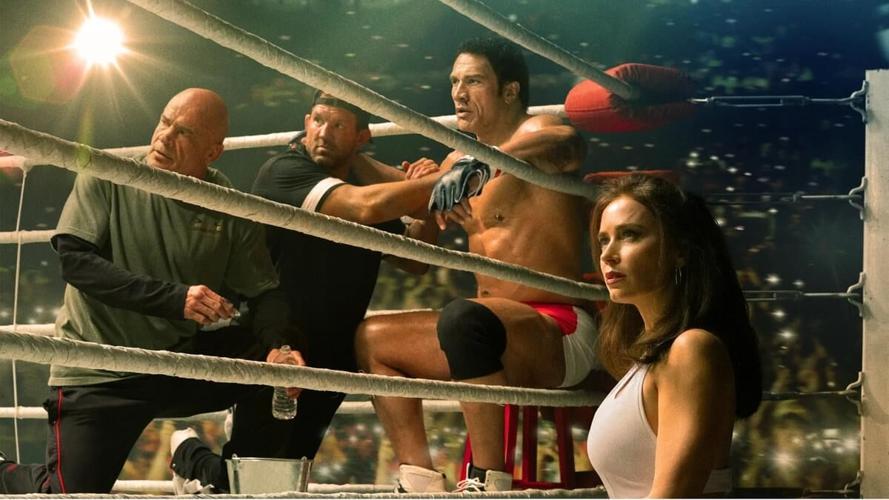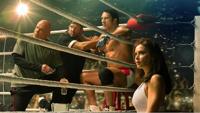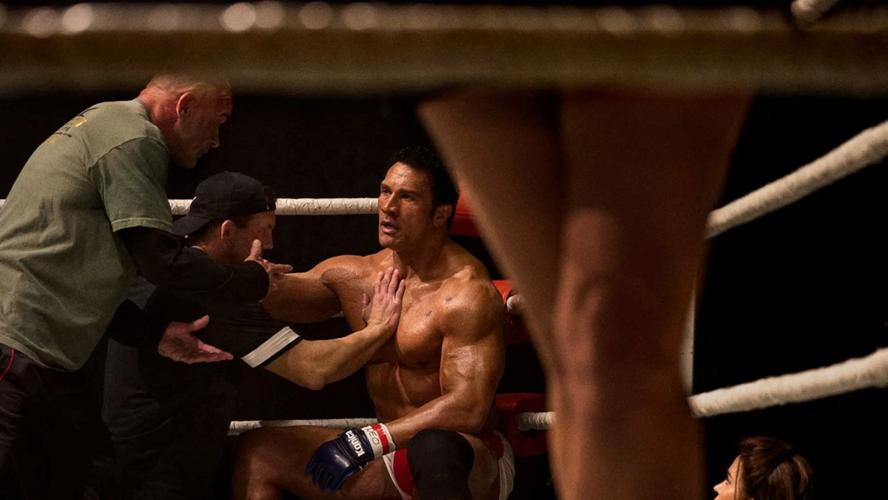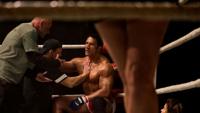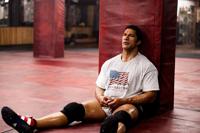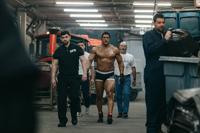Over 20 years ago, HBO aired a documentary called The Smashing Machine: The Life and Times of Extreme Fighter Mark Kerr (2002). It was about a mixed martial artist (MMA) who is considered a pioneer in the early days of the Ultimate Fighting Championships, or UFC. It gave insight into the struggles and issues surrounding the sport, as well as the struggles and issues of athletes within it. It was a great profile and biography of this particular man and gave great glimpses into other athletes and people around him. Mark Kerr started out as a wrestler who transitioned into MMA. He achieved some success, but his name might not be as famous or high-profile. Today, there are quite a few celebrity MMA fighters, such as Conor McGregor, Gina Carano and Randy Couture, but Mark Kerr is one of those early figures that opened the door to a lot of things that current UFC athletes take for granted.
Because Dwayne Johnson started out as a wrestler also and is roughly the same age as Mark Kerr, it makes sense why he would star in this film and why he would want to honor Mark Kerr. It should be noted that there are some people who object to the fact that a Latino actor didn't play this role because Mark Kerr is part Puerto Rican, but Johnson does indeed play Mark Kerr in the time depicted in the HBO documentary, from 1997 to 2000, which probably remains the most pivotal time in Kerr's life. We follow Kerr, as he competes in what's called the Pride Fighting Championships, which is a precursor to the UFC. The Pride Fighting Championships take place in Japan, mainly due to the UFC not being as well organized or as well attended. It also depicts his relationship to his girlfriend, played here by Oscar-nominee, Emily Blunt. It was a great documentary. I understand why writer-director Benny Safdie (Uncut Gems and Good Time) would basically want to adapt it into this narrative.

Unfortunately, what Safdie does is what feels like a copy-and-paste job where he was just doing what seems like a shot-for-shot remake of that documentary. He didn't really come up with his own ideas for how to tell this story or find any different angles. Safdie was basically mimicking what was done in the documentary, with some minor alterations. Again, I understand why you would copy the documentary. It's a very well done documentary and bringing this story to the big screen would help to get Kerr's name out there, as it should be, if you're a person who cares or are interested at all in the sport. However, it doesn't let this film stand out as a distinct work of art, distinct from the documentary. It's not that much different from Gus Van Sant's Psycho (1998) in what it feels like Safdie is doing here.
Van Sant's film was a shot-for-shot remake, but it did have some additive qualities. Arguably, Safdie's film does have some additive qualities too. He's able to do a little bit more with the fight scenes in terms of immersing the audience. He's also able to depict certain moments that could only be talked about in the documentary. Here, Safdie is able to give his actors the scenes to play out instead of just being talked about. He's able to show and not simply tell. If anything, this film is a vehicle for his actors, particularly Johnson who seems to be angling for a nomination for Best Actor at the 98th Academy Awards. He could be successful because there does feel like there are echoes here of Mickey Rourke in The Wrestler (2008) who was nominated at the 81st Academy Awards.

Darren Aronofsky who directed The Wrestler didn't seem to be as hamstrung as Safdie is here. Safdie seems locked into the shot-for-shot aspect. There are scenes here that weren't in the documentary, but still it feels very much like a faithful re-creation, which feels like it limits his ability to explore things outside the boundaries of the documentary. There appears to be a powerful central idea in Safdie's film. That idea appears to be how Mark Kerr, and probably other athletes, deal with extreme pain. Of course, a drug addiction forms and watching Mark deal with it is typical, but there is a great line of dialogue here where Mark says, "A day without pain is a day without sunshine." It's a passing reference to this idea that Mark is likely in constant pain and how someone deals with that kind of chronic situation is a serious thing.
There's even a scene later where Bas Rutten who in real-life was a UFC champion and is playing a version of himself gets injured or activates an old injury. The amount of pain Rutten is in is overwhelming. He admits that it's a pain he's had before, suggesting it might be a regular or chronic condition. That scene was a powerful one, but Safdie does nothing more with it. There are scenes in the documentary about Mark Kerr's family, which Safdie cuts those family members in this film, so presumably there was time to explore things with this idea of chronic pain and the drugs needed to address it. Yet, Safdie leaves that rather hollow. A better film in this vein of dealing with an up-and-coming athlete in a physical contact sport that recently hit theaters is The Iron Claw (2023). It wasn't my favorite film of that year, but it does a lot more than this one in terms of interrogating its characters.

Rated R for language and some drug abuse.
Running Time: 2 hrs. and 3 mins.
In theaters.

